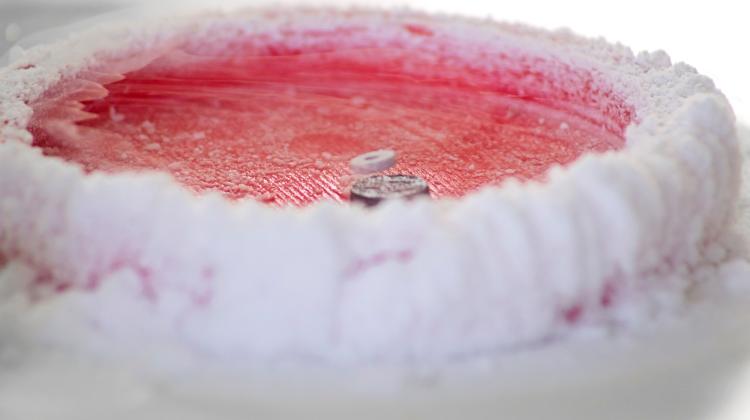The future of superconductors is a huge mystery, says Polish Academy of Sciences expert
 Credit: Adobe Stock
Credit: Adobe Stock
Despite the recent sensational reports of Korean scientists, we might have to wait a long time for the superconducting revolution. It might also never come. On the other hand, the technology development may surprise us. Research on superconductors is highly unpredictable, says Professor Jan Martinek from the Institute of Molecular Physics of the Polish Academy of Sciences.
Professor Martinek is the head of the Department of Superconductivity and Phase Changes at the Institute of Molecular Physics of the Polish Academy of Sciences in Poznań. His research concerns superconductivity, including high-temperature superconductivity.
Recently, the media reported about Korean scientists who supposedly developed a superconductor operating at a temperature of over 100 Degrees C. According to Martinek, this could herald a revolution, because today's superconductors operate at a temperature close to absolute zero.
'Superconductors operating at room and even higher temperature could indeed revolutionize the world. Theoretically, we could transmit electricity over long distances without losses. We could, for example, build a solar power plant in the Sahara and send electricity to Europe. We could build more economical electronic devices, or strong electromagnets that are necessary in various fields,’ he says.
However, he adds that the hopes may be premature.
'Temperature is not everything. It is important that the superconductor can transmit a sufficiently high current. It should also have such properties that it can be used to produce wires and other components. This is how superconductors discovered more than 100 years ago work. They require cooling with expensive liquid helium to a temperature slightly above absolute zero (approx. minus 270 degrees C), but they work with high currents and they are metal alloys that can be easily shaped. They can be found, for example, in electromagnets operating in magnetic resonance imaging devices. Such superconductors can also be the basis of some quantum computers currently under construction.’
Although superconductors operating at a much higher temperature (minus 183 degrees C) were discovered in the 1980s, they have not found widespread use. This is because they are made of difficult-to-process ceramic materials. Attempts are being made to transfer energy with them.
'The discovery of a high-temperature superconductor alone does not mean success, and the material announced by the Korean team is more similar to ceramics than metal,’ Martinek says.
He adds that logic dictates that we should approach the recent sensational reports with caution.
'Korean researchers claim that they have discovered a material belonging to a completely new family of superconductors. At the same time, a lot depends on the precisely selected proportions of a large number of ingredients. First of all, it is unlikely that you will immediately come across the best material from the entire, rather numerous family. Secondly, there is a very small chance that with the announced parameters, scientists have found average material in their family and that even better ones waiting to be discovered.’
He adds that usually such searches look the other way around.
'First, when you come across a new family of superconductors, you discover a material with poor properties, then, after many attempts, you find better and better ones. And here we have an immediate success. This seems unlikely. I believe that we can also rule out the scenario that Korean experts have been studying a new family of materials for many years. There is great competition in this field and no one waits to announce such discoveries, because people are rightly afraid that someone else will beat them to it and get all the splendour. This research group is not particularly well-known either.
‘In fact, the discussion should start when other teams try to repeat the described result. For now, we are dealing with a curiosity.’
Meanwhile, he explains, the search for new superconductors is an extremely difficult task. Despite 100 years of research, many questions remain unanswered.
'Research can be conducted basically in two ways. One is computational methods, the other is experimentation. However, we understand quite well only the classical superconductors discovered a hundred years ago. We do not fully understand how those discovered in the 1980s work. It is therefore difficult to predict which substances should be used, and in what systems. It is a bit like being in a big dark room with only a match in hand and searching for something almost in the dark. However, new ideas do emerge sometimes.
'Every now and then we read about a new kind of superconductor. This was the case, for example, with hydrides (chemical compounds of hydrogen with other elements) in the solid state, the maintenance of which, however, requires exorbitant pressures.’
When it comes to revolutionary superconductors that will operate at room temperature, according to Professor Martinek, it is not even clear whether it will be possible to obtain them.
'It is a complex issue. As far as we understand superconductivity, nature does not place any particular barrier when it comes to temperature. In superconductors, to put it simply, electrons pair up and this how these materials work. An increase in temperature breaks these pairs. The question is whether it will be possible to find materials in which the electron pairs are strong enough not to break apart at higher temperatures,’ he says.
Another matter, the scientist adds, is the current intensity. 'The higher the temperature, the weaker the current that the superconductor can conduct. We are still discovering new families of superconductors, but finding ones that will work at room temperature with a sufficiently high current is an extremely difficult challenge. It is therefore difficult to predict anything.
'Maybe we will find such material in 10 years, maybe in 50, maybe in 100. We might also never find it,’ he concludes.
PAP - Science in Poland, Marek Matacz
mat/ agt/ kap/
tr. RL
Przed dodaniem komentarza prosimy o zapoznanie z Regulaminem forum serwisu Nauka w Polsce.
















